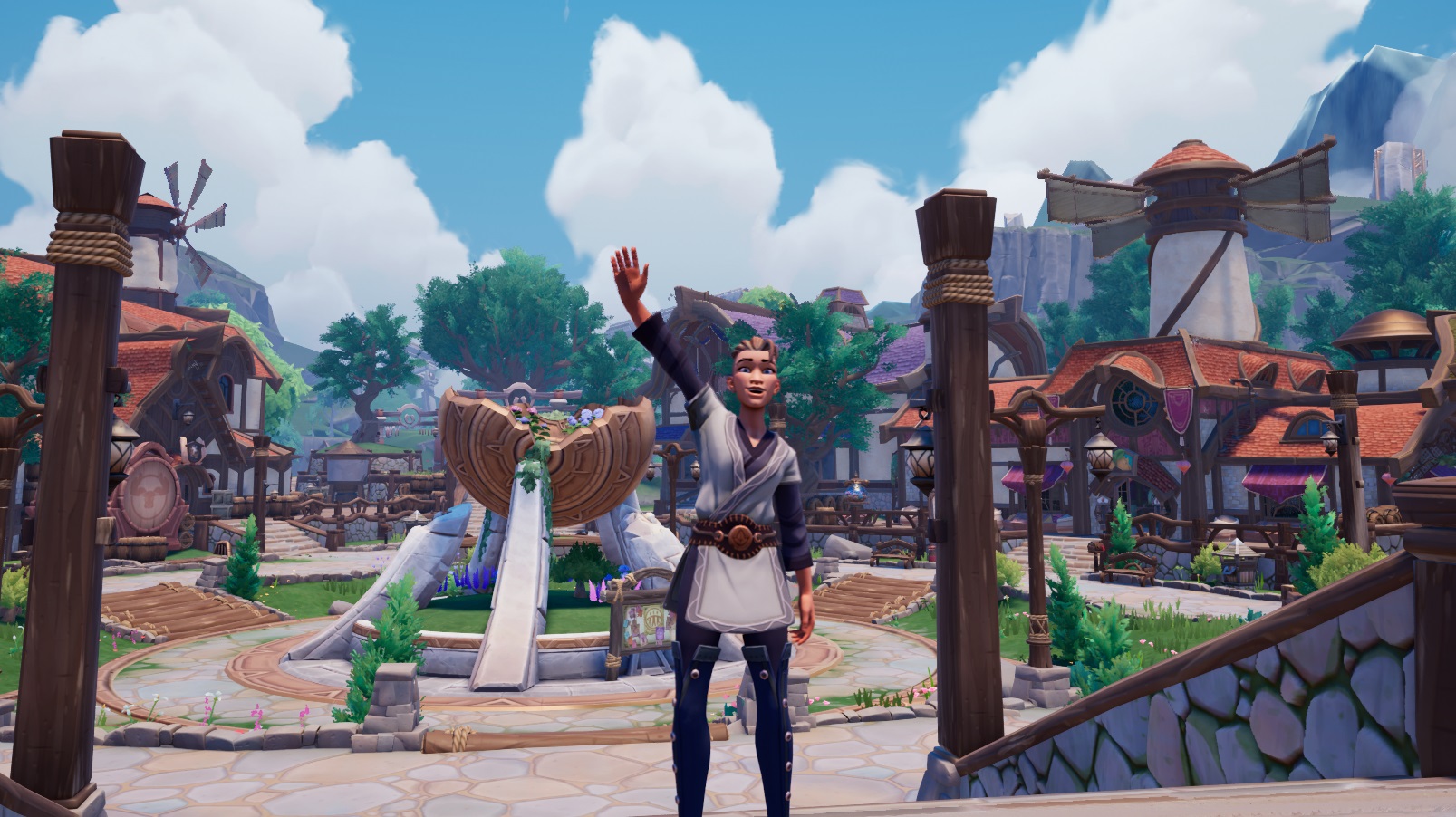
Palia is headed into an open beta next week for all life sim lovers to try.
Life sims and MMOs are my two main vices, so “cozy” MMO Palia feels like it’s being made specifically for me. I’ve got a bit of emotional investment in its success, I’ll admit, and after about a week with its alpha version, I’m quite attached to crafting and hopeful that it will keep growing as an MMO.
In Palia, you are not a hero. You’re one of many, many humans who’ve popped into the world after the local Majiri people believed you’d all gone extinct—a nice deviation from the usual MMO setup, which asks us to believe that the world is primarily populated by chosen ones. There’s no PvE or PvP combat, and instead of a big quest to defeat evil, your goal is simply to become a member of Kilima Village. Here’s what that entailed for me in my first week with Palia:
Chopping trees and rocks on my instanced home property Building crafting stations for furniture and then waiting the requisite time while my raw materials process into ingredientsCatching bugs and hunting small animals around the mapSelling a lot of fish, because that always seems to be the first reliable source of income in a life simVisiting local skill masters to accept quests and buy new recipesChopping a lot more trees so I can build a house on my lot and move out of my tent
(Image credit: Singularity 6)
Unlike a typical life or farm sim, I’m not tracking calendar days or energy use. I share a time of day with everyone on the server so there’s no sleeping until tomorrow or getting stranded halfway through my chores without energy. Instead, I play through the entire day and night cycle (an hour in real time) and cook myself meals to increase the experience I gain for activities.
There is a main questline to pursue, which involves figuring out why you and all the other humans are appearing, and helps provide a sense of progress. The other goals I’ve got to chase are upgrading each of my tools (axe, pick, watering can, fishing rod, etc), leveling up my friendship with locals by bringing gifts, collection achievements, and adding new rooms and decor to my home.
Relationships and romance are another big goalpost in Palia. Each character has several most desired gifts each real-world week that you can find out by talking to them (or other players) and each milestone in your relationship with them will reward gifts like a key to visit their house or a new piece of decor. Romanceable characters have an additional relationship track and storyline at the end of which (currently) they’ll give you a pin to wear that other characters will take note of.
(Image credit: Singularity 6)
Customizing my property is one of Palia’s most permissive (and expensive) systems, clearly the primary “endgame,” so to speak. I can place furniture from my third-person perspective or from above and also snap to a grid or use free placement. I can hang light fixtures from the rafters, place small clutter objects freely on shelves, and change room transitions from doorways to open concept. I can even manage editing permissions for my lot to grant different friends access to touch my stuff. I have the feeling that Sims 4 build mode players who took a detour through Disney Dreamlight Valley will be happy to stop off in Palia to experiment there, too.
Palia’s gathering, crafting, and decorating loop has absolutely hooked me, no question.
When it comes to multiplayer, partying with friends gives buffs to resource collecting and you’ll always get your own loot. Cooking in particular eventually becomes a multi-step process where you and friends all attempt separate minigames for chopping, stirring, and other activities within a time limit. Friends can also contribute resources to house upgrades you’ve started, so keep your grinding pals close.
You’re encouraged to make use of strangers, too—I spent a day fishing in town beside other players while one cheered and clapped for us, which developer Singularity 6 says helps nearby players cinch a tough catch. More than once I watched players call out in server text chat when they’d found a glowing purple Flow Tree, inviting others to join in on cutting it to grab the rare wood resource.
(Image credit: Singularity 6)
Massive aspirations
Palia’s gathering, crafting, and decorating loop has absolutely hooked me, no question. Like Dreamlight Valley, it trades the urgency of a daily schedule in other life sims for the never ending task list of a live service game. I’m as susceptible to that style of design as anyone, so I admit I voluntarily played a good bit more of Palia’s alpha than I really needed to for work purposes.
What I hope to see from it in the future is a truly shared, massively multiplayer experience. It does have communities (guilds) and a friends list where I can party with others to hunt, forage, or visit their homes. But I often felt my encounters with other players were pretty transient.
One of my favorite developments in the past decade of MMORPGs is shared world events that players flock together to participate in. Guild Wars 2 does them particularly well, with huge multi-step experiences that hundreds of players take part in, whether to fight a dragon or have a snowball fight with children. Even cozy MMO-adjacent games like Book of Travels and Sky: Children of the Light have small collaborative challenges that require multiple players to join each other out in the world. Coming together to cut those self-healing Flow Trees is a nice nod to the concept, but I’m hoping Palia expands into a recurring map events system of some kind.
(Image credit: Singularity 6)
In more minor complaints, I’m not much for the Fortnite-core art style or the blue-gray gradient menus that feel off-the-rack in any game. There are moments when it nearly reaches the Breath of the Wild vibes it seems to be aiming for—late at night when I’m walking back home under the trees and a lilting zither melody floats in.
Palia’s world does have heart and personality. Its Majiri people are charming, falling into familiar archetypes like the standoffish hunter Hassian and excitable carpenter Tish and I’m genuinely interested in learning how they all relate to one another. Its first “adventure zone” Bahari Bay is where I’m meant to take on higher tier gathering and challenges later, with additional adventure zones planned later.
Palia doesn’t feel quite there yet as it heads into its open beta phase, but its foundation is solid. I’m reminded of The Elder Scrolls Online, which had a middling first year before it came into its own as a genuinely good MMO. Like online Tamriel, I’m confident that Palia’s cozy MMO concept is one that deserves to exist, even if I have to wait a bit for it to find that last 10% of sparkle I want from it.
Palia will be free-to-play with cosmetic transactions when it fully launches. Singularity 6 has posted a tentative features list for the rest of the year including a themed event, new characters and quests, and controller support. For now, it enters an open beta phase on PC on August 10. From this point onwards, Singularity 6 says you’ll keep your game progress through to full launch, so now’s as fine a time to try as any.



